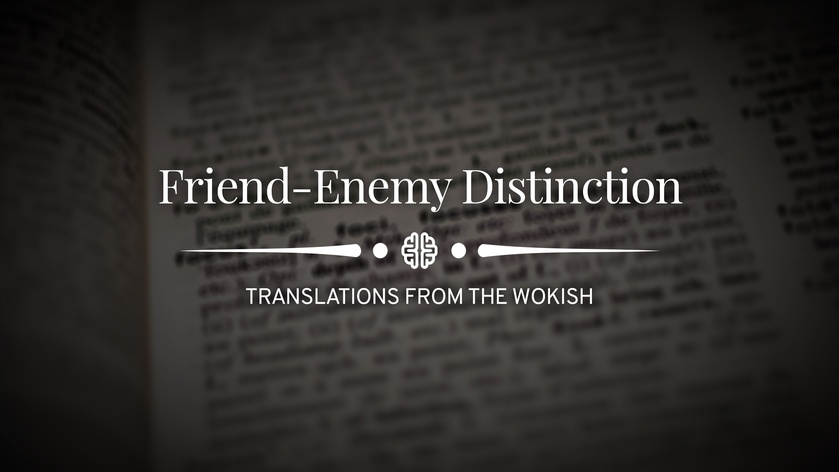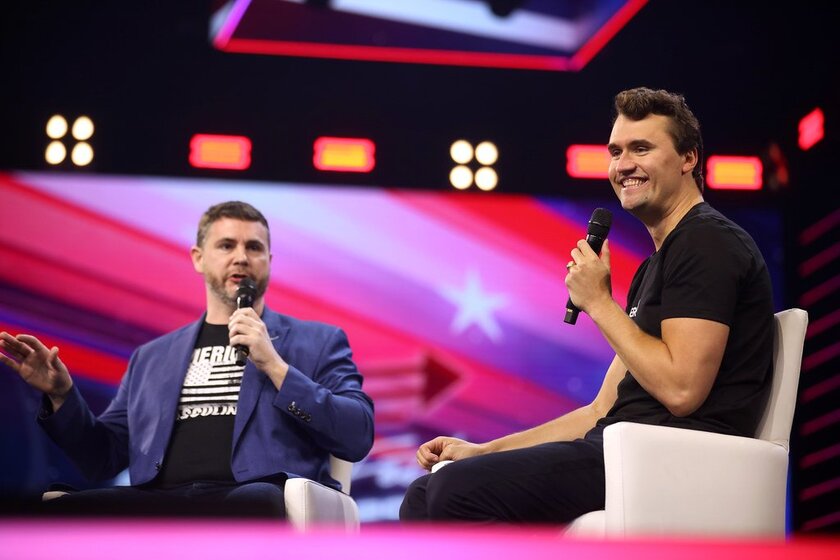Over the past two years, tens of millions of Americans have awakened to the fact that the “Dialectical Left,” which includes Communism, achieves its agendas most effectively by strategically changing the meanings of words. This is a tactic that is very effective until it is recognized, at which point it rapidly becomes counterproductive because it is so obviously manipulative and so easily resisted by demanding clear definitions, especially in policy documents. The challenge is that there are a lot of words that our society depends upon, which allows Communist activists to move on from one word to another, then to another, as their language games get exposed.
Some of these strategic equivocations about the meanings of words are more impactful than others. Currently, there are just three terms that have been profoundly subverted and are being used to transform our society by Communists for Communist ends. These are inclusion, democracy, and citizenship. All three are being redefined together. Understanding how this manipulation is taking place is key to neutralizing it, and that starts with understanding how these three words are being strategically misused. First, let’s discuss the general principle of how the Communist or Dialectical Left redefines terms to achieve its ends.
The Essence of “Critique”
The method of the Communist or Dialectical Left is “critique,” which is the specific kind of “criticism” that characterizes Critical Theory. Critical Theory, if you don’t know, is the operative tool of the dominant strain of twentieth century Marxist Theory, which is sometimes called “Critical Marxism” and is associated with the Frankfurt School (Institute for Social Research). What it refers to is identifying and reframing concepts in terms of Marxist structural analysis.
In general, when Critical Marxists, including the Woke Marxists of today, say they are applying “criticism” to something, or considering it in a “critical” way, what they mean is that they are strategically redefining the key terms involved so that they are understood in terms of Marxist sociopolitical analysis. In other words, they’re reframing the meanings of words so that they are to be understood in terms of alleged exclusionary “power dynamics” that benefit one class of people and oppress another class of people. These, Critical Marxists believe structure every aspect of society, including how things are talked and thought about, and critique is meant to subtly reframe that.
For example, consider the term “justice,” which we often hear from Critical Marxists who claim to be in pursuit of “Social Justice.” The notion of justice has to be shifted from a perspective of individuals finding fair treatment under the law in an impartial way to a new perspective where “fairness” takes into account a belief that the law is not and cannot be impartial and thus favors certain groups over others in its very construction. As a result, the law and its application has to be tilted in favor of those groups who are theorized to be structurally disadvantaged by the existing system, so justice follows from an underlying but hidden assumption of a need for partiality to “level the playing field.” The concept of meting out justice remains intact, but impartiality under the law is replaced by intentional partiality under the law so that those Marxist Theory claims are “structurally disadvantaged” are given additional privileges relative to everyone else.
For another example, consider the term “education.” The concept of education has to be understood and then redesigned according to this paradigm also—as does everything in society. Critical Marxism, you see, believes that the very terms of society itself are corrupt and structurally unjust and thus must be retooled to move the marginalized to the center and vice versa. Thus, “education” is criticized for being an unjust credentialing mechanism that allows those who accept the (unjust, corrupt) terms of the existing society to move into positions of power and authority from which they can ensure it reproduces itself. A genuine “education,” or a “critical” education, then, is a political education that teaches people to understand society this way and to reject it. At present, we have been miseducating our children on these terms for at least thirty years.
In both cases, you can see that there has been a subtle shifting of the meaning of the term in question by “criticizing” it in a way that redefines it to the Communist Left’s advantage. This process is how they subvert words, institutions, and even society itself. Now that we have a sense of how it works, let’s turn to three key terms the Communist Left is using to subvert and transform society itself into something wholly under their control. These terms again are inclusion, democracy, and citizenship, and they build upon one another.
1. Inclusion
Of all the words the Woke Marxists strategically misuse today, few are more important than “inclusion.” Many people have awakened to the sense that something is badly wrong with that term and that it somehow indicates selective exclusion, and they’re right. Now that you know the trick, it’s easy to understand how it works.
To Woke Marxists, inclusion expresses the idea that nobody is excluded by virtue of the unjust power dynamics Woke Marxist Theory describes. For them, free societies with impartial laws don’t address the underlying structural power dynamics that create de facto exclusion or a sense of not being fully welcome. For example, racial and sexual minorities (and especially Woke activists within those groups) might be made to feel excluded, they insist, by virtue of a belief that straight, white men are the “defaults” in many positions of authority. Or, women might be excluded as a matter of circumstantial fact by the demands of motherhood, which quickly and neatly explains many of their views about abortion “rights” and the recently published notion in the New York Times that the maternal instinct is a myth created by men—that is, in Marxian terms, an oppressive ideological narrative that supports structural patriarchy.
When huge entities like the World Economic Forum (WEF) and United Nations (UN) say that their agenda is to transform the world to achieve a more sustainable and inclusive future, this is the subversion they’re relying upon. People who Marxist Theory says have been or are being excluded—i.e., for them, Leftists—must be actively included, which requires excluding everyone else, either by limits to occupancy or by deliberate censorship and purges.
2. Democracy
Democracy is supposed to be “rule by the people,” something America’s Founding Fathers had the good sense to realize was a bad idea (not least because they were watching the Democratic French Revolution descend into murderous terror as they wrote the Constitution). Rule by the people means all of the people, and Communists have seized upon this idea to redefine “democracy” and stoke resentment about supposed structural disenfranchisement for over a century.
In The State and Society, written in 1917, Vladimir Lenin explained that what we think of as “democracy” in capitalist societies is, in fact, “bourgeois” democracy—rule by the empowered minority in the bourgeoisie. “Democracy for an insignificant minority, democracy for the rich – that is the democracy of capitalist society,” he wrote.
[I]n capitalist society we have a democracy that is curtailed, wretched, false, a democracy only for the rich, for the minority. The dictatorship of the proletariat, the period of transition to communism, will for the first time create democracy for the people, for the majority, along with the necessary suppression of the exploiters, of the minority. Communism alone is capable of providing really complete democracy, and the more complete it is, the sooner it will become unnecessary and wither away of its own accord. (Lenin, The State and Society, chapter 5)
Lenin explained, using critique, that democratic voting in a capitalist society isn’t truly democratic because it only serves the bourgeois minority. Democracy will only be genuine when everyone is equal, which only occurs under Communism. In the meantime, under Socialist rule in the USSR, a dictatorship of the proletariat will simulate true democracy by elevating the masses and suppressing the “exploiters.”
In modern parlance, what Lenin is describing would be—in fact, is—called “inclusive democracy,” and it utilizes the exact same trick on the definition of “inclusion” to achieve its aims. The underlying belief is that society is exploitative of certain groups (who are in the majority), and thus those people aren’t equal participants in the democratic process. They have to be made equal (the contemporary term for this adjustment of enfranchisement, opportunity, and privilege is equity; the term in Lenin’s day, which still has major purchase was Democratic Socialism).
When we hear players in politics or the media say that open discussion threatens to create “misinformation” that threatens “our democracy,” this is very likely to be what they are talking about. (Never mind that we live in a republic, not a democracy.) They view their democracy—the only legitimate democracy—as “inclusive democracy” and thus one that must adjust shares, i.e., discriminate and suppress, in order to achieve its aims. As Lenin pointed out, it’s not that they want to be unfair; it’s that they have to be in order to get their way so that their evils can “wither away of their own accord” when they’re no longer needed anymore (when Communism arrives). (Spoiler: Communism never arrives; it’s fake.)
3. Citizenship
It will at this point surprise you none at all to find out that they have done the exact same critique to “citizenship,” which usually denotes the relationship persons recognized as citizens have with the State. In republics like the United States, this relationship is that the State borrows political authority from the people, and in exchange for that authority, the State is to use it only to secure the inalienable rights of a free people, among these life, liberty, and the pursuit of happiness, which Thomas Jefferson believed followed naturally from the right to one’s property. Communists do not like the right to private property. In fact, Karl Marx wrote in The Communist Manifesto that Communism can be summarized in a single sentence: “abolition of private property.”
For Woke Marxists, citizenship is the other side of the coin of democracy—citizens are the people enfranchised and empowered to participate in a democracy. Therefore, one is only a full citizen to the degree structural power doesn’t disenfranchise that person, whether through exclusion or as a matter of fact. Inclusive citizenship is a Marxist model of citizenship that seeks to address this issue and thus to reframe what it means to be a citizen outside of any belief in an impartial State (which it believes is impossible and is always organized to maintain the privilege, power, and advantage of the already-advantaged).
A key example of this issue has already been raised. Motherhood detracts from full citizenship by placing demands (to the family, not direct civic participation) on women who become mothers. The impositions of motherhood exclude women from full citizenship, especially if they aren’t given complete authority and autonomy to decide if they will become (or remain?) mothers. Inclusive citizenship would demand a reprioritization to increase the enfranchisement of women as a class in order to correct for this imposition, not to mention their beliefs about structural patriarchy, exclusion from power due to sexism, and having to cope with misogyny. Similar impediments to full inclusive citizenship are believed to be imposed upon racial minorities, sexual minorities, and all other forms of “minoritized” groups by the structural power dynamics Woke Marxism exists to “critique.” Inclusive citizenship answers this alleged challenge by offering privileges to “historically marginalized” groups, particularly Leftist activists among them, and suppressing others, especially conservatives.
By redefining citizenship, though, Leftist activists can successfully subvert society entirely by rewriting its so-called social contract: the agreement between the State and its citizens that holds society together. Citizenship, as a concept, writes the terms of the social contract. By replacing citizenship with “inclusive citizenship,” Leftists create a social contract that inherently advantages Leftism while intentionally disadvantaging everyone that opposes Leftism. This, in turn, creates the Socialist Democracy Lenin insisted would pave the way to Communism, at which point true inclusion will finally arrive—and we will finally have Social Justice.
In closing, it’s worth noting that Klaus Schwab, executive chairman of the World Economic Forum, wrote in his 2022 book The Great Narrative for a Better Future: The Great Reset, Book 2, that his explicit goal is to rewrite the social contracts of societies around the globe. What they should change to, he writes, would favor sustainability and inclusivity as primary values, and the purpose of the “Great Narrative” is to foster this fundamental change in values at all levels of society in every society at once so that they can better cooperate on solving what he calls existential global challenges. Inclusive citizenship, in other words, will give way to global citizenship, which will have to be inclusive and redistributive by definition. Never mind, I suppose, that this has always been the stated aim of Marxist Communism from Karl Marx’s earliest writings. Never mind, indeed.


















